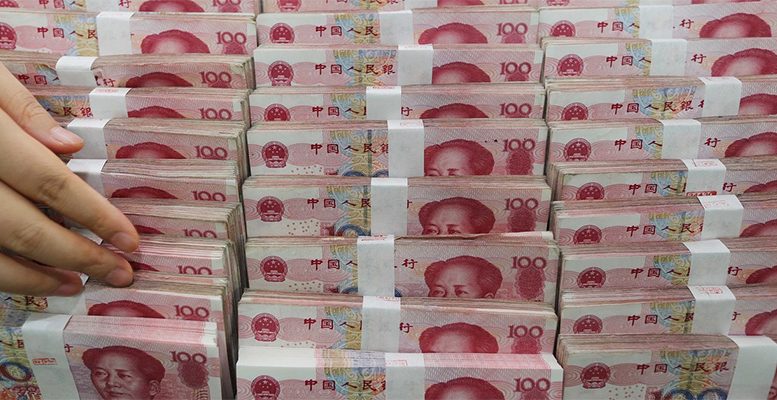Barry Eichengreen via Caixin | The New Year has seen a flurry of positive news about yuan internationalization. On January 15th the Bank of France announced that it had added the yuan to its reserve portfolio. The National Bank of Belgium reported the next day that it had acquired 200 million euros worth of yuan-denominated assets. A board member of the German Bundesbank indicated that his institution would follow suit.
This bullish sentiment is not hard to understand. Chinese growth in 2017, at 6.9%, exceeded market expectations. The People’s Bank of China continues to slow the increase of liquidity, reassuring observers that the country’s corporate borrowing binge is being brought under control. Interest rates have already risen, and they are expected to rise further in 2018.
All this suggests that the Chinese currency, having appreciated against the dollar by 7% in 2017, will strengthen further.
So the roots of this enthusiasm are self-evident. But a more sober view suggests that recent central-bank announcements are, to paraphrase Shakespeare, much sound and fury signifying nothing. Although a number of central banks have indeed indicated that they are adding the yuan, these are only token moves. They are very tentative steps by conservative central bankers dipping their toes into uncharted waters. The yuan still accounts for a mere 1 per cent of total reported global foreign exchange reserves.
And on the market side, Swift’s most recent survey shows that the yuan still accounts for just 1.75% of total cross-border payments. That share is now rising, but it is still down significantly from its 2.28% share two years ago.
As is well known, China responded to financial-market volatility in 2015 by tightening capital controls. Those measures had the effect of reducing liquidity in the foreign exchange market. More recently the authorities have started selectively relaxing those same controls. But the 2015-16 episode is a reminder that if financial-market volatility returns, the authorities will again respond by tightening controls — an expectation that limits the readiness of market participants to reallocate toward the yuan.
Meanwhile, Chinese politics are evolving in precisely the opposite of the direction needed to foster yuan internationalization. The country’s anti-corruption drive will help, to be sure, insofar as it renders economic decision making more transparent. Foreign investors want to see a system of checks and balances, in which diverse stakeholders have a say in economic decision making.
It’s not a coincidence, in other words, that all international reserve currencies in history, stretching back to the 14th century and the currencies of the Italian city-states of Florence, Venice and Genoa, have been the currencies of entities with republican forms of government, where individuals other than the leader had significant input into administrative decisions. So long as China continues moving in the opposite direction, foreign investors will remain cautious.
The one thing that could accelerate the shift into yuan, I have long argued, is a development that undermines the appeal of the dollar. A temporary government shutdown is the least of these risks, although it is symptomatic. The greater danger is that continued political gridlock will prevent the U.S. Congress from raising the debt ceiling in March. The U.S. Treasury will then have to decide who to pay. It’s not inconceivable that a Trump Treasury will refuse to pay foreign bondholders.
We know that the strength of exchange rates and the attractiveness of currencies depend on economic growth. It follows that a recession in the U.S. could significantly diminish the allure of the dollar. We don’t know if and when a recession is coming, but we do know that when it arrives the U.S. will be singularly ill prepared to cope, having already cut taxes and exploded the budget deficit.
Worse yet, the Republican-controlled Congress is intent on rolling back provisions of the Dodd-Frank Act, including those requiring medium-sized as well as big banks to undergo stress tests. This means that the next recession may also be the next financial crisis.
Finally, at the very same time China is pursuing its Belt and Road initiative, President Trump is seeking to withdraw from foreign alliances or to renegotiate them to put “America first.” Investors, both private and official, tend to hold the currencies of their geopolitical partners.
This fact has favored the dollar historically, but may not favor it going forward. From this point of view, the response of European central banks is entirely predictable.
Thus, the yuan’s fate as an international currency won’t be determined in Beijing. It will be determined in Washington.





